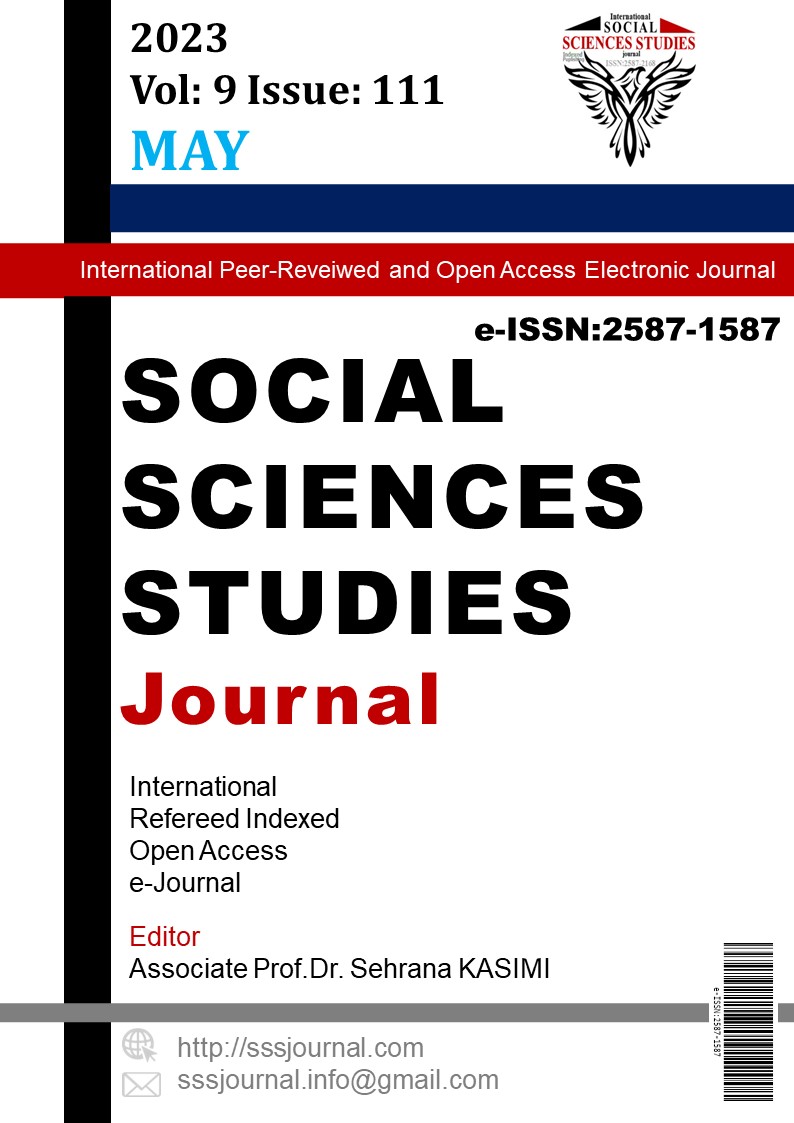Author :
Abstract
Bu araştırmanın amacı, Ankara İlindeki kırsal bölgelerde görev yapan okul yöneticilerinin sorunlarını belirlemek ve çözüm önerileri sunmaktır. Tarama modelinde olan araştırmanın örneklemini Ankara İlindeki kırsal bölgelerde görev yapan 108 okul yöneticisi oluşturmaktadır.
Araştırmanın verileri, anket yöntemi ile toplanmıştır. Veriler, SPSS istatistik paket programı kullanılarak çözümlenmiştir. Çalışanlarının görüşlerine göre, çözümlemelerde ve değerlendirmelerde frekans (f), yüzde (%) ve Ortalama (X) istatistiklerinden yararlanılmıştır. Görüşlerin demografik faktörlere göre incelenmesi için ise t-testi, varyans analizi ve ANOVA analizi kullanılmıştır.
Araştırma sonucunda, Köy Öğretmenleri Sorunları ölçeğine ilişkin bulgular incelendiğinde, “Köyden daha iyi bir yere ne zaman tayin olacağımı düşünüyorum, Lojmanda su kesintisi oluyor, Öğretmen tarafından yapılan bilgilendirme ve yönlendirmeyi köy halkı dikkate alıyor, Özel eğitime muhtaç öğrencileri rehberlik kuruluşlarına yönlendirmede güçlük çekiyorum, Lojman yetersizliği nedeniyle öğretmenlerin bir arada kalması sorun yaratıyor” ifadelerine ilişkin sorunlar en büyük beş sorun olarak belirlenmiştir. Ayrıca; Bayanların, 1-2 Yıl okul kıdemi olan Öğretmenlerin, sonucunda 21-30 Yaş grubunda olan Öğretmenlerin ve Lisansüstü eğitim alan Öğretmenlerin daha az sorun algısına sahip oldukları tespit edilmiştir. Köy okullarında çalışan öğretmenlerin sorun algılarının yaşa, cinsiyete ve okuldaki görev süresine göre farklılık gösterip göstermedi incelendiğinde ise, bayan öğretmenlerin ve 1-2 Yıl okul kıdemi olan öğretmenlerin daha çok sorun yaşadıkları sonucuna varılmıştır.
Keywords
Abstract
The aim of this research is to identify the problems of school administrators working in rural areas in Ankara Province and to offer solutions. The sample of the research, which is in the scanning model, consists of 108 school administrators working in rural areas in Ankara Province.
The data of the research were collected by the survey method. The data were analyzed using the SPSS statistical package program. According to the opinions of the employees, frequency (f), percentage (%) and Average (X) statistics were used in the analyzes and evaluations. In order to analyze the opinions according to demographic factors, t-test, analysis of variance and ANOVA analysis were used.
As a result of the research, when the findings on the Village Teachers' Problems scale are examined, "I think when I will be assigned to a better place from the village, There is a water shortage in the housing, The village people take the information and guidance made by the teacher into consideration, I have difficulty in directing the students in need of special education to the guidance institutions, Lodging The problems related to the statements “it creates a problem for teachers to stay together because of their inadequacy” were determined as the five biggest problems. Moreover; It has been determined that women, teachers with 1-2 years of school seniority, teachers in the age group of 21-30 and teachers with graduate education have less problem perception. When examining whether the problem perceptions of teachers working in village schools differ according to age, gender and tenure at the school, it was concluded that female teachers and teachers with 1-2 years of school seniority experienced more problems.





